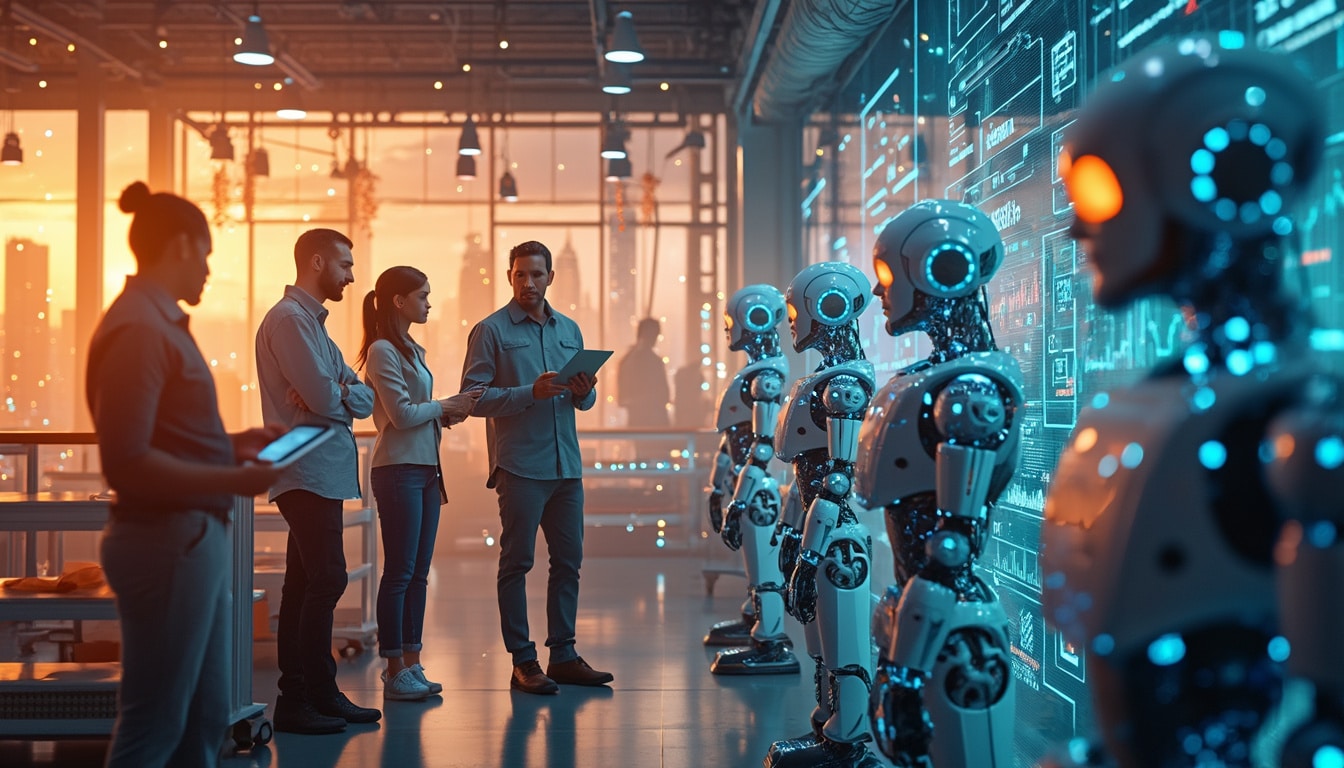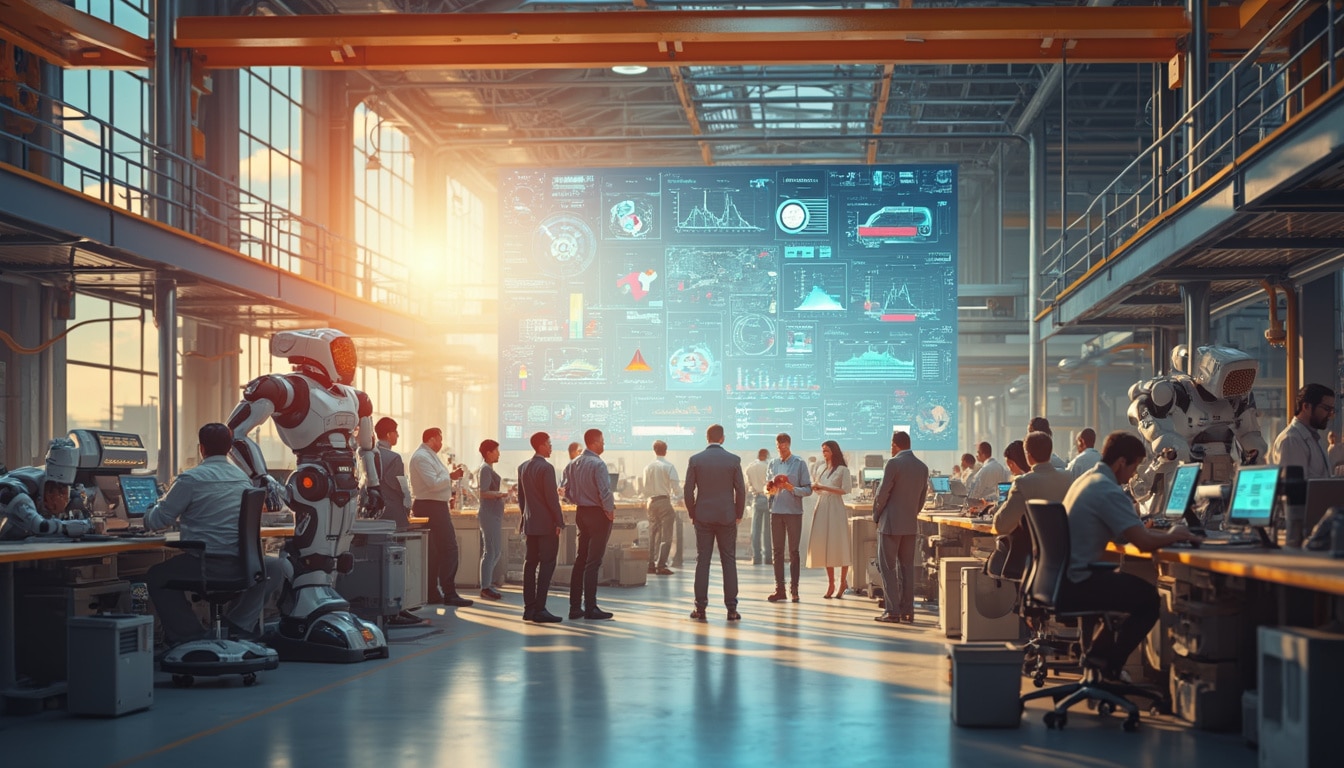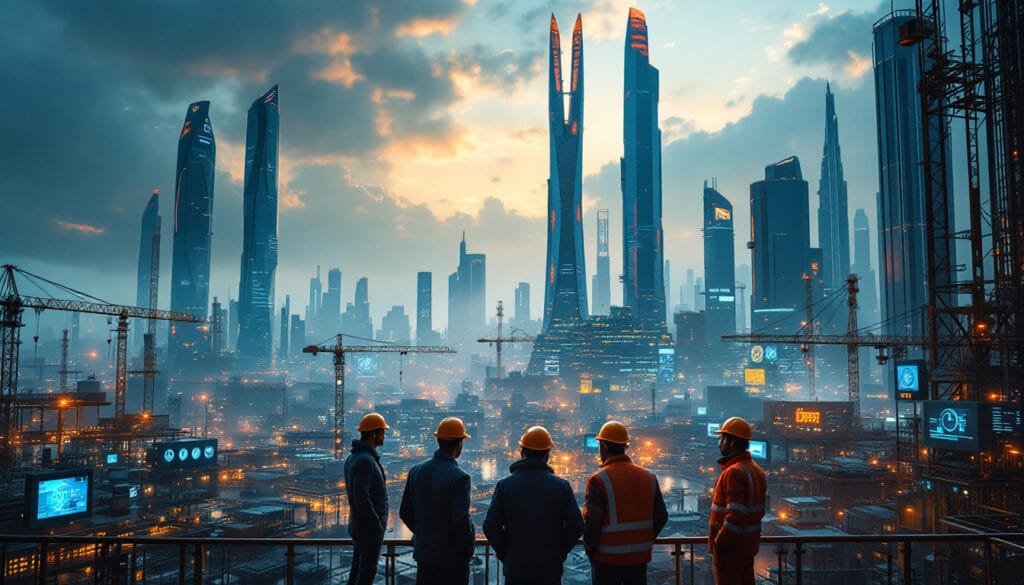The era of Industry 4.0, a symbol of the fourth industrial revolution, is not limited to the technological transformation of production chains. It also redefines the world of work, or Work 4.0. By integrating advanced digital technologies, automation, artificial intelligence, and the Internet of Things, this evolution offers a new framework in which workers’ skills must be adapted and enhanced. The dialogue between machines and humans becomes central, transforming how tasks are executed, organized, and managed in increasingly connected and dynamic environments.

Table des matières
ToggleThe revolution towards Work 4.0
The concept of Industry 4.0 suggests a radical transformation of production, which naturally coincides with an evolution in our way of working, termed Work 4.0. This concept encompasses not only cutting-edge technologies such as the Internet of Things, artificial intelligence, and automation, but also a new approach to work organization. Indeed, thanks to these advancements, companies can offer conditions where flexibility, connectivity, and collaboration come together to create a stimulating environment.
Redefinition of skills and professional roles
With the emergence of Work 4.0, we observe an urgent need to readjust workers’ skills. Professionals must reskill and develop new abilities to adapt to this digital era. Educational institutions and employers must collaborate to offer training programs focused on data analysis, digital systems management, and the design of new collaborative platforms. This transition affects not only recent graduates but also experienced employees who must redefine their roles in a context of continuous transformation.
Organizational changes and daily innovation
Another pertinent view of Work 4.0 is that of innovation entering the daily work routine. Companies that adopt this model become more agile, responsive, and ready for constant innovation. This culture, bolstered by digitization, not only fosters interdisciplinary collaboration but also encourages an environment where leadership is inclusive and participative. Workspaces are reconfigured to promote creativity and allow for greater job satisfaction, while aligning organizational objectives with those of its employees.





